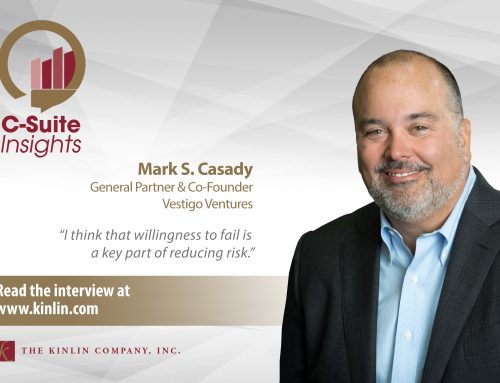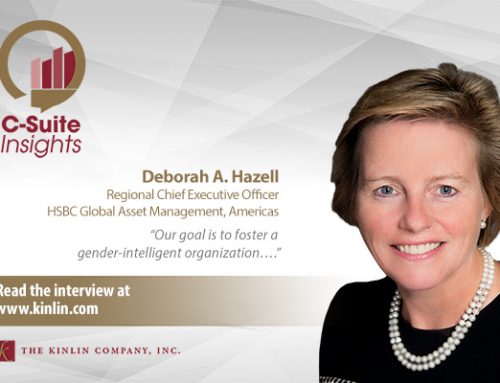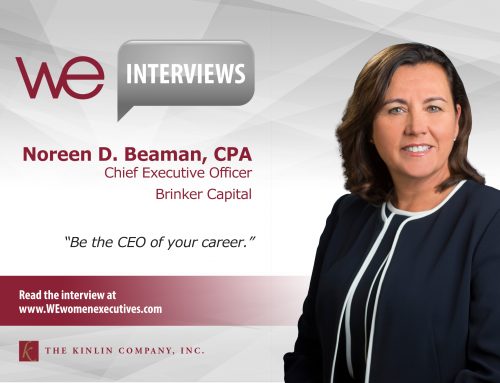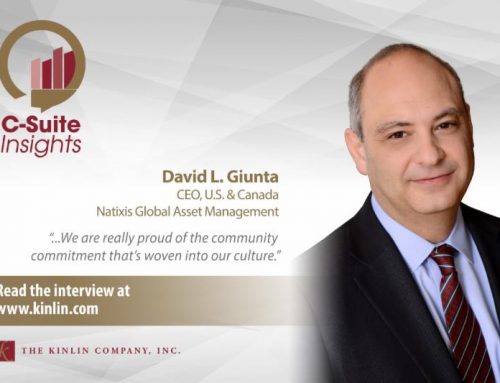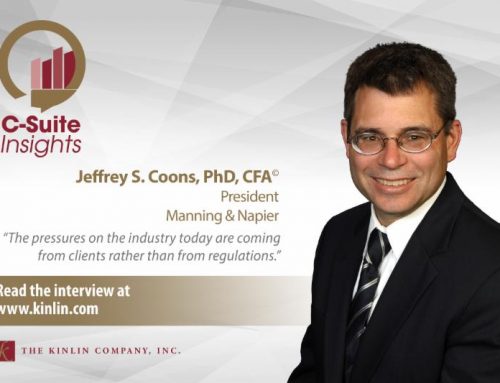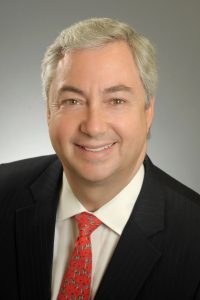 Kai Sotorp
Kai Sotorp
CEO
Manulife Asset Management
For the past three decades, I have been interviewing senior-level executives within the asset and wealth management industry. I recently launched a new interview series, ‘C-Suite Insights,’ conversations that not only highlight the careers of some of the industry’s top CEOs and senior executives but also feature their insights and advice.
One of the first executives that I sat down with was Kai Sotorp, CEO of Manulife Asset Management and Global Head of Wealth and Asset Management at Manulife. As CEO and President, Sotorp serves as Manulife’s internal asset manager, and as global head of wealth and asset management, he oversees the company’s business with its affiliates. With a portfolio of nearly $340 billion in private and public assets under management, Sotorp is a busy man.
Over the course of our interview, Sotorp shared a bit about his journey to CEO, his views on the skillset most critical to someone in his position, and some of the business issues that are weighing on his mind.
A facility with numbers
Given Sotorp’s tenure in the industry and the wide-ranging nature of his responsibilities, I thought it would be helpful at the outset of our conversation to get a bit of background. What initially drew you into the financial sector, I asked.
“I grew up in an international environment, living in six different countries across Asia, Latin America and Europe by the time I graduated from high school in Norway. My Norwegian father and American mother encouraged me to go to the U.S. to study. I decided to enroll at Boston University – my mother is from Boston and BU offered me a year of advance credits and additional scholarships, things that made the school particularly attractive as I was paying my own way.
“I dual-majored in economics and finance. After completing my education at BU, I wanted to get a graduate degree, but felt that I should first get some job experience that would give me a rudimentary set of skills and prepare me to apply for an MBA. I chose to become a credit analyst, a logical extension of studying finance, and worked for then FleetBoston for two years before enrolling at Harvard Business School.
“Post-graduation I worked for a number of years for The Mac Group, a Boston-based consulting firm, to gain exposure to many industries and realized that I was gravitating toward the financial services industry. In particular, I liked the asset management industry for its intellectual challenge, exposure to global environments, and the contact with stimulating and smart people who focused on intellectual content rather than a physical product. I joined Kemper Financial, a Chicago-based investment company, due to its entrepreneurial nature and the excitement of being part of both a mutual funds and institutional business.
“As I also had a desire to be part of what I saw as the ongoing growth story for Asia, my job at Kemper focused on international development in that region. That set the stage for my future career with AIG and UBS, which were attractive employers for me due to their strong footprints across Asia.”
An aptitude for managing people and maintaining focus
After getting a sense of Sotorp’s educational background and experience, I was eager to delve a bit deeper into his skillset. Of all the knowledge and experience you’ve amassed, what skills do you think are the most critical for someone working in senior management, I queried.
“It’s evolved. Initially my financial acumen and ability to analyze data and numbers was very important, but for the longest time my most valuable asset has really been looking around the corner in terms of defining a vision, my ability to manage people, and my ability to communicate. In my business, we don’t have physical plant or supply chains to manage. It’s all about high intellectual caliber people, and people are only going to get excited about being in a place if they understand clearly that there’s a basis for success and how they can contribute to that success in a way that will accrue to their own goals.
“It’s also important to be able to maintain focus on an overriding strategy or vision; I’ve found that it’s very easy for an asset management company to become distracted. Clients have a million and one different needs, sales people want infinite customization, investors have their own ideas about where to take things, and performance is a continuously moving target. Within the context of focus, you also need a discipline of diversification – depending on a single capability or strategy is dangerous. However, there’s an art to maintaining diversification while also focusing on what’s going to count. I often find myself reminding people of what should not be done, because whatever you start doing ends up having a long tail, which leads to significant embedded costs from which you have trouble extracting yourself.
“Having a sense of where global trends are taking us is key, and the dynamics of the markets have shifted dramatically. When I first began working in the field in the ‘80s, emerging markets were sort of cool; things would wax and wane and if you timed it right, you could make good money. Now emerging markets are part of the core global economy. Furthermore, the nature of markets has changed quite a lot, and new instruments and investment techniques have evolved. While I entered a fundamental, analysis-driven world focused around stock and bond assets, we now see flows driven by passive, alternatives and solutions. Current institutional portfolio asset allocation strategies reflect all these developments. There’s fundamentally a more integrated global characteristic driving things in the market than when I first started working in this industry.”
A keen interest in the client
Sotorp’s references to the global economy offered a perfect segue to my next question. What are the opportunities you’re thinking about these days, I asked, and what’s worrying you?
“I’m very focused on what’s happening with our clients. People talk about client-centricity, but I don’t think the asset management industry has done a great job of being client-centric or understanding clients. For example, look at the huge number and range of products out there; people launch products like there’s no tomorrow – some of them work, some of them don’t – and we often confuse a product that has an investment outcome with the need that it’s trying to fulfill for clients. I think that clients are becoming more discerning in what they value and pay for as well as much more demanding around overall portfolio allocation strategy. They’re also searching for early entry opportunities rather than simply chasing performance in traditional-style box areas.
“Since I joined the industry in the 1980s, we’ve also progressed from an accumulation focus – where the emphasis was on building wealth – to a preservation and distribution of assets focus, because the majority of people who own the wealth today are within a decade or more of retirement rather than 30+ years away. This is a truly central point – over the next 30 years we will face the most dramatically aging global population the world has ever seen, and these individuals will require investment returns sufficient to sustain them over a longer life span, while being much more concerned with current income and principal protection. As a result, the focus on decumulation strategies will increase.
“Another thing that’s changed significantly is that our industry became accustomed to making our base management and performance fees off of capital markets that were generating high, and reasonably consistent, returns. There were even periods of time when even fixed income generated extremely attractive double-digit returns. For a number of years, and for the foreseeable future, we’re in an environment where everything’s compressed, even equity isn’t being compensated as it was historically. These factors have come together at a particularly challenging time for investors – beneficiaries and individuals are nearing retirement just as the markets are delivering less for them. For the industry, it means that clients are saying, ‘I don’t think I’m getting value for my money.’
“We are also concerned with retirement trends. To accommodate a higher degree of need for income in retirement, without the simple option of allocating into fixed income, there is a clear need to develop outcome solutions that are not constrained by only investing in long only and public securities. We’ve also got to do it cheaper than we ever did before, so we have to be able to introduce cheap beta exposure into the product structures.
“A related dimension that I’m focused on as an asset manager is bringing real assets to the retail, high net-worth and mid- to small-size institution segments. These are investors who have not been able to benefit easily from these alternatives in the past and where we have strong competitive capabilities, e.g., real estate, timber, agriculture, renewable energy, infrastructure, etc. This is a challenging mission due to regulatory inhibitors, the inherent illiquidity of these assets, and the level of complexity and sophistication associated with these asset classes. I personally believe that over time, these will go from being esoteric capabilities sold on a stand-alone basis to being embedded components of multi-asset portfolios that combine liquid and illiquid elements. We will have to address the lack of sophistication and knowledge issue in a substantive fashion so that we’re bringing quality and real skill to the table while also broadening the client base.”
A sensitivity to societal changes
Having spoken a bit about the business factors that are occupying Sotorp’s mind, I was also curious to get his perspective on some of the human resource issues that have dominated the news lately, including parental leave and gender equity in pay. How do you think these issues are best addressed, I inquired.
“It’s a complicated topic. I think government has to play a certain role because one of the things that’s very challenging on the gender front is ensuring a forward-looking social environment that minimizes zero-sum outcomes. It’s currently difficult to exit our industry, have a family, and then come back again, but it is about more than women. It’s about creating a more flexible work environment for the entire work population. In Manulife, we have been executing on a program we call “work smart,” where we are targeting to have a quarter of our employees have the flexibility to work from home or alternative locations to their office.
“In this day and age, we just don’t think you need to be in the office to do your job, so we’re equipping our environment so that people can work effectively from home or wherever they choose to be. Employees can come to the office when they want to and be home when they need to. The policy hasn’t been the easiest thing to institute – there are traditionalists in every company – but we’re getting meaningfully close to that statistic. For example, 27 to 28 percent of our private markets group workforce is mobile. The policy is attractive to people because it operates on deliverables and quality of output. In asset management, you tend to have a distribution of talent across the ranks, so it’s meaningful to provide intellectually strong people with the ability to do their job, whether or not they’re in the office. It’s a tough conundrum to solve, but we’re trying to lower the threshold of tradeoffs to be made if you’re trying, for example, to decide whether to continue your career or start a family.
“I also believe that employee engagement is important; we run engagement surveys all the time. We try to think about our employees like we think about our clients. They are here of their own free will, and that means we’ve got to create an environment that supports their desires for talent growth, innovation, experimentation, and career change. Many factors must come together to create a balanced and enthusiastic workforce.
“With respect to the pay gap, I don’t quite understand why it continues to exist. I pay my people based on their capability and I don’t distinguish whether they’re male or female. I think women tend to impose much tougher standards on themselves. I’ve also found that women believe they will be taken care of if they prove themselves; they believe in meritocracy, whereas many men follow the ‘squeaky wheel’ principle and are always pushing. I think it’s things like this that gradually lead to a pay gap.
“On this front, while I think government can certainly play a role, I believe that what will ultimately lead to equal pay in our business is the war for talent. I think women are increasingly feeling more emancipated and more aware of their worth, and if they can’t get rewarded where they are, they will go somewhere else. In our company, we focus on people’s talents, not their gender.”
A concern about economic dissatisfaction
As our interview drew to a close, I couldn’t resist asking Sotorp about an issue that’s dominated the news cycle for months: the presidential election. What are your concerns post-election, I asked.
“I believe there’s a heightened risk in the world for social disruption. Look at Brexit, for example. I think the bigger issue of that vote is the long-term implications of England’s decision. What were the reasons for Brexit? What are the reasons for Trump? If you look at the beneficiaries of the economic boom prior to the global financial crisis and the beneficiaries since, the financial gains have not been broadly distributed throughout the population. A relatively small subset of people has prospered and the consolidation of wealth continues to rise. We’re starting to see a rising dissatisfaction around the world because the majority of people have not participated in the economic expansion and increase in wealth.
“I worry about the implications of having many people who are now dissatisfied with their lot in life. That disgruntlement can lead to social instability, which in turn can lead to rising populism, isolationism, potential trade wars, and a heightened case of tensions that can escalate between countries as well as within a country. You have pundits and populists that come to the fore, making promises to their citizens. This type of a cycle would be disruptive to global growth and capital markets, increasing economic and capital market risk. While currently an unquantifiable concern, we have to be observant of additional populist election outcomes in Europe and elsewhere over the near to medium term as leading indicators of a rise in such risk.”
![]()

